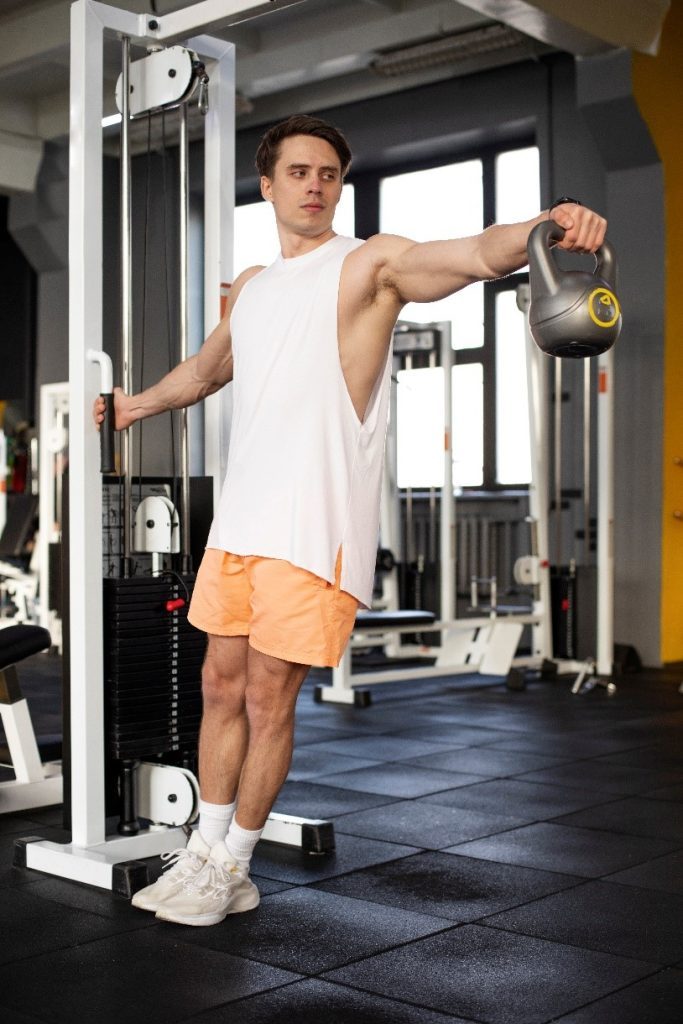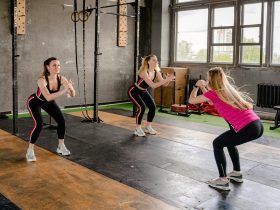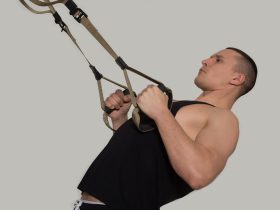Cable shoulder exercises can strengthen your shoulders.
Introduction:
Cable shoulder exercises are a crucial part of any well-rounded shoulder workout routine, since they provide focused muscle engagement and adaptability. Whether you want to enhance shoulder strength, stability, or overall shoulder aesthetics, incorporating cable workouts into your training routine will help you meet your fitness objectives more successfully. In this extensive guide, we’ll go over the key features, specifications, and frequently asked questions concerning cable shoulder exercises, allowing you to optimize your workouts and maximize your shoulder gains.
Key Features of Cable Shoulder Exercises:
Targeted Muscle Engagement:
Cable machines allow for precise targeting of the shoulder muscles, including the deltoids, rotator cuff muscles, and traps. Exercises like cable lateral raises, cable front raises, and cable face pulls enable isolated muscle activation, promoting balanced shoulder development.
Constant Tension:
Unlike traditional free weights, cable machines provide continuous tension throughout the entire range of motion, maximizing muscle activation and promoting muscle growth. This constant tension is particularly beneficial for hypertrophy-focused workouts and improving muscle endurance.
Range of Motion:
Cable shoulder exercises enable a full range of motion, allowing for greater stretch and contraction of the shoulder muscles compared to other resistance training methods. This enhanced range of motion can lead to improved flexibility, mobility, and overall shoulder health.
Specifications of Cable Shoulder Exercises:
Type of Machine:
Cable shoulder exercises can be performed using various types of cable machines, including cable crossover machines, adjustable pulley systems, and single-arm cable machines.
Weight Stack or Resistance Bands:
Most cable machines feature adjustable weight stacks or resistance bands, allowing you to customize the resistance level to suit your strength and fitness goals.
Attachments:
Cable machines often come with a variety of attachments, such as D-handles, straight bars, and rope handles, providing options for different exercises and grip variations.
Adjustable Pulleys:
Many cable machines feature adjustable pulley heights and positions, enabling you to perform exercises from different angles and target specific areas of the shoulders more effectively.
Safety Features:
When using cable machines, it’s essential to follow proper form and safety precautions to prevent injury. Always start with a light weight and gradually increase the resistance as you become more comfortable with the movements.
Conclusion:
Cable shoulder exercises offer a highly effective and versatile approach to building strength, stability, and aesthetics in the shoulder muscles. By understanding the key features, specifications, and FAQs surrounding cable shoulder exercises, you can tailor your workouts to target your shoulders effectively and achieve your desired fitness outcomes. So, elevate your shoulder workouts with cable exercises and unlock the shoulder gains you’ve been striving for!
Here are four highly effective cable shoulder exercises to add to your workout routine:
1. Cable Lateral Raises:
• Adjust the pulley of the cable machine to the lowest position and attach a D-handle.
• Stand sideways to the machine with your working side facing the cable.
• Grasp the handle with your hand closest to the machine and stand with your feet shoulder-width apart.
• Keeping your arm straight, lift the handle out to the side until it reaches shoulder height.
• Pause briefly at the top of the movement, then lower the handle back down under control.
• Perform equal reps on both sides to ensure balanced muscle development.
2. Cable Front Raises:

• Adjust the pulley of the cable machine to the lowest position and attach a straight bar handle.
• Stand facing the machine with your feet shoulder-width apart and grasp the handle with an overhand grip.
• Keeping your arm straight, lift the handle directly in front of you until it reaches shoulder height.
• Pause briefly at the top of the movement, then lower the handle back down under control.
• Focus on maintaining a slight bend in your elbow and engaging your shoulder muscles throughout the exercise.
3. Cable Face Pulls:
• Adjust the pulley of the cable machine to chest height and attach a rope handle.
• Stand facing the machine with your feet shoulder-width apart and grasp the handles with an overhand grip.
• Step back slightly to create tension in the cable and position your hands at shoulder height.
• Pull the handles towards your face, keeping your elbows high and squeezing your shoulder blades together.
• Pause briefly at the peak of the movement, then slowly extend your arms to return to the starting position.
• Focus on pulling with your rear deltoids and upper back muscles to target the posterior shoulder.
4. Single-Arm Cable Shoulder Press:

• Adjust the pulley of the cable machine to shoulder height and attach a single-grip handle.
• Stand facing away from the machine with your working side closest to the pulley.
• Grasp the handle with an overhand grip and position your arm at a 90-degree angle, elbow level with your shoulder.
• Press the handle upward until your arm is fully extended, focusing on squeezing your shoulder muscles.
• Slowly lower the handle back down to shoulder height, maintaining control throughout the movement.
• Perform equal reps on both sides to ensure balanced muscle development.
FAQs about Cable Shoulder Exercises:
Are cable shoulder exercises suitable for beginners?
Absolutely! Cable shoulder exercises can be easily modified to accommodate beginners by adjusting the weight and starting with simpler movements before progressing to more advanced exercises.
How often should I perform cable shoulder exercises?
To see significant results, aim to incorporate cable shoulder exercises into your workout routine 2-3 times per week, allowing for adequate rest and recovery between sessions.
Can cable shoulder exercises help alleviate shoulder pain?
Yes, strengthening the muscles surrounding the shoulder joint through cable exercises can help alleviate shoulder pain by improving stability, mobility, and overall shoulder function. However, it’s essential to consult with a healthcare professional if you have existing shoulder issues.
Can I perform cable shoulder exercises at home?
While cable machines are commonly found in gyms, you can replicate many cable shoulder exercises at home using resistance bands or alternative equipment like suspension trainers. However, the versatility and variety of exercises may be somewhat limited compared to using a cable machine.
How do I prevent shoulder injuries when performing cable shoulder exercises?
To reduce the risk of shoulder injuries, focus on maintaining proper form, avoiding excessive weight, and warming up adequately before starting your workout. Additionally, incorporate exercises that strengthen the rotator cuff muscles and improve shoulder stability.















Leave a Reply